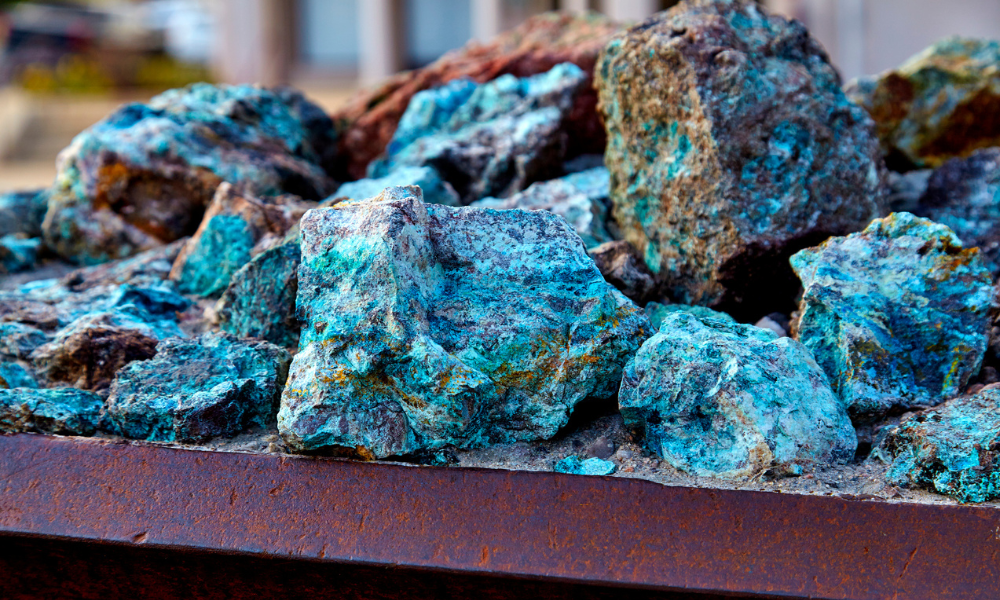Canada has a short window to become the international leader in critical-mineral development that the federal government wants it to be, say mining lawyers.
Last December, Ottawa announced Canada’s critical-minerals strategy to spur economic growth and address climate change. Among the feds’ focus areas in achieving their goals are “accelerating project development” and “driving research, innovation, and exploration.”
While Canada has the resources, skilled professionals, universities and colleges, and the will of policymakers, lawyers who advise the mining sector say slow, disjointed regulatory processes threaten to crumble the country’s “critical mass.” Canada needs investment in human capital and infrastructure, streamlined assessments, coordination between governments, and public education to meet the critical-minerals strategy’s objectives.
Stakeholders generally agree that producing critical minerals for batteries powering cars, solar panels, windmills, and electronics is necessary for the world to transition away from fossil fuels, says Linda Hogg, a partner in Gowling WLG (Canada) LLP’s Vancouver office. She says Canada is at a “junction point where we can really make a difference.” Hogg practises corporate and securities law, focusing on corporate finance, M&A, mining, and corporate governance.
“This is one of the few areas where both federal and provincial governments tend to be rowing in the same direction,” adds Ian Mitchell, head of mining and partner in the capital markets practice at Gowlings.
Insufficient access to capital is a primary hindrance to the development of a new critical- minerals ecosystem, both Hogg and Mitchell say.
“The risk capital hasn’t been going into the mining space to advance projects,” says Mitchell.
Part of the reason for that is the “significant competition” for investment in the last decade, including from the technology and cannabis industries, says Abbas Ali Khan, a partner at Bennett Jones LLP, whose practice is focused on the mining and technology industries.
“Even in the bull markets, there’s always a shortage of capital.”
Khan says Canada is competing for mining funding with Nevada and Australia, which are more friendly jurisdictions from a regulatory standpoint.
Canada has also toughened its reviews of foreign investments from state-owned enterprises. Innovation Science and Economic Development Canada recently forced three Chinese firms to pull their investments out of three Canadian lithium companies. While he notes that he is not criticizing the policy, Khan says it also adds to the funding gap.
In the competition for investment dollars, lawyers agree that time is not on Canada’s side.
Khan says it takes around 15 years – and can take as much as 25 – to bring a mine into production.
“It’s very complicated to build a mine,” says Mitchell. “And just to be clear, it should be. I don’t think anyone is saying it shouldn’t. We want to make sure the environment is protected. We want to make sure that the First Nations are consulted. We want to make sure that everyone has taken the social and environmental impacts into effect.”
With both federal and provincial environmental impact assessments, Canada needs to adopt a “one project, one assessment” policy, says Khan.
In May 2023, Ontario gave Royal Assent to Mining Act amendments with Bill 71, the Building More Mines Act, 2023. The province said the legislation will expedite approvals and provide certainty for mining companies, and it is part of Ontario’s critical-minerals strategy.
Khan says the federal critical-minerals strategy has done a good job of attracting manufacturers of battery metals. Whether it’s the General Motors facility in Bécancour, QC; the Volkswagen plant in St. Thomas, ON, or the Stellantis/LG Energy factory in Windsor, ON, federal and provincial governments are shelling out billions in subsidies to encourage auto manufacturers to produce their electronic-vehicle batteries in Canada.
To supply these and other factories with the required minerals, Khan says Canada needs to streamline the approval process to get more mines into operation. He says it must also enhance the supply chain with more refineries, smelters, and the necessary infrastructure to keep it humming.
More infrastructure is necessary to provide power and road access to the remote areas in northern Ontario, Quebec, and BC, where many of these projects need to be built, which will require cooperation and funding from provincial and federal governments, says Mitchell.
He says Canada has challenges in human capital, approval timelines, and finance capital.
Mining and mineral engineering graduates declined by a third in Canada between 2016 and 2020, BNN Bloomberg recently reported.
“For the last 10 years, mining and development projects in Canada have not been moving forward very quickly,” says Mitchell. “They’ve been moving forward in Latin America, Africa, and other jurisdictions. We don’t have the skill sets we need.”
He says Canada should be finding ways to encourage people to pursue this skill development, whether it is through focused immigration or partnering with companies to produce those skill sets.
“If we’re trying to build a new ecosystem, we need to make sure that we have the skill set that’s going to supply that ecosystem with people.”
Lithium powers the rechargeable batteries used in electric vehicles and power grid storage, and Ottawa has classified it as a critical mineral. Canada has the sixth-largest known lithium reserve, with 681,000 tonnes – three percent of the world’s total.
With a clean grid, access to minerals, proximity to the EU and the US markets, the global transition from fossil fuels, and the opportunity to partner with First Nations on projects, Canada can be a world leader in criticalmineral production, say Hogg and Mitchell.
With a skilled workforce, the financial centre, the infrastructure, and the resources, Canada is the ‘Silicon Valley for mining,’” says Khan.
“But we are going to have to act in the next few years, or it’s going to pass us by,” says Hogg.





